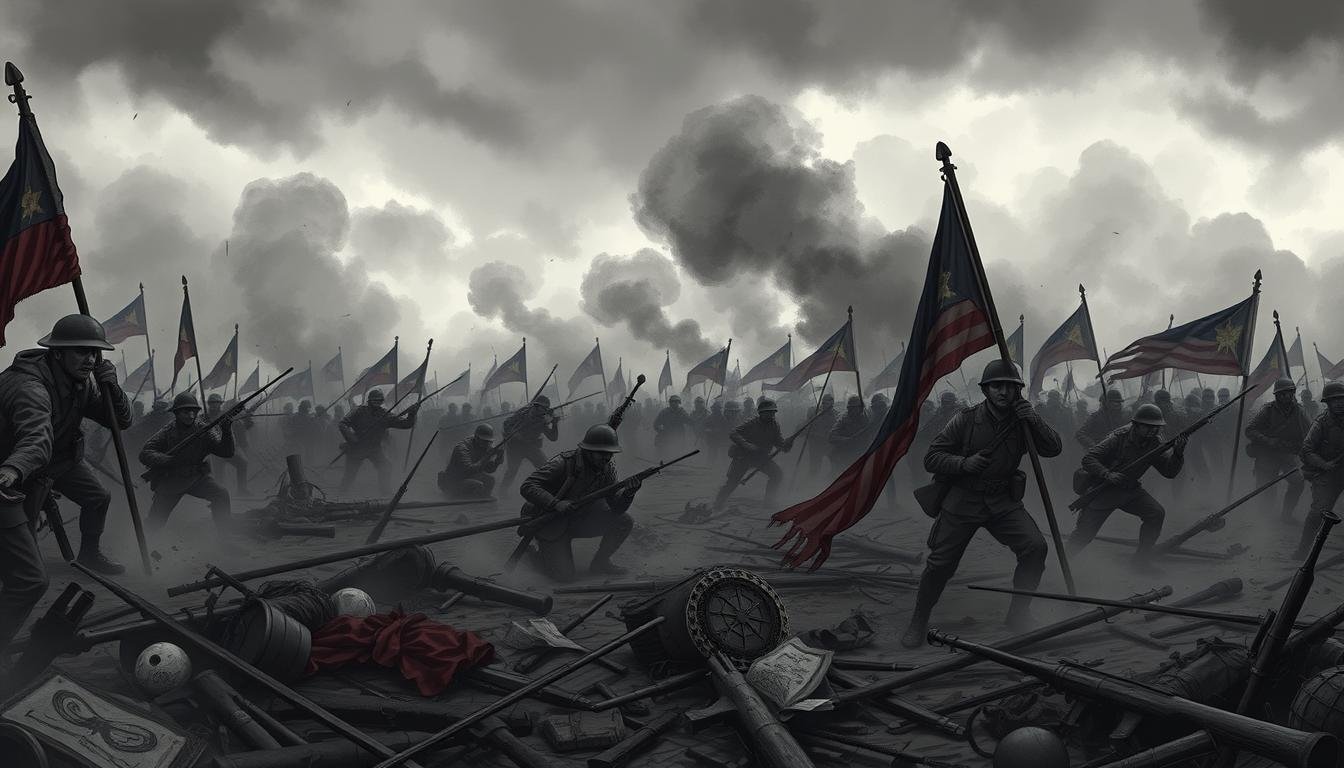The Philippine-American War was a complex conflict that lasted from 1899 to 1902, marking a significant event in Philippines history. The war was sparked by the Philippine Revolution against Spanish colonial rule, which was followed by the Spanish-American War. The Philippines, with its diverse ethnic and racial groups, was divided along regional lines, making it difficult to achieve unity and resist foreign rule, ultimately leading to disunity.
The Philippine Revolution, a landmark event in the rise of Filipino nationalism, was central to the formation of the short-lived Republica Filipinas, known as Asia’s first republic. The Philippines had been a Spanish colony for over three centuries, and the Filipino people had developed a strong desire for independence. However, the country’s disunity played a significant role in its defeat in the Philippine-American War.
Introduction to the Philippine-American War
The war was a result of the Philippine Revolution against Spanish colonial rule, which was followed by the Spanish-American War. The United States, which had acquired the Philippines from Spain for $20 million, faced resistance from Filipino revolutionaries who sought independence. The Philippine-American War was a significant event in Philippines history, marking the country’s struggle for independence and self-governance, highlighting the importance of unity in the face of disunity.
Key Takeaways
- The Philippine-American War lasted from 1899 to 1902 and was a significant event in Philippines history.
- The war was sparked by the Philippine Revolution against Spanish colonial rule.
- Disunity played a significant role in the Philippines’ defeat in the war.
- The Philippine Revolution was a landmark event in the rise of Filipino nationalism.
- The United States acquired the Philippines from Spain for $20 million.
- The war marked the country’s struggle for independence and self-governance.
The Historical Context of the Philippine-American War
The Philippines had been a Spanish colony since the 16th century, and the Spanish had imposed their language, culture, and religion on the Filipino people. This Spanish colonial legacy had a profound impact on the Philippines, shaping the country’s language, culture, and politics. The Philippine Revolution against Spain began in 1896, led by Emilio Aguinaldo and other Filipino nationalists.
The United States, which had been expanding its influence in the Pacific, intervened in the conflict and defeated the Spanish in the Spanish-American War. This American intervention in the Philippines was a significant turning point in the conflict, as it led to the defeat of the Spanish and the establishment of American rule. The Philippine-American War began in 1899 and lasted until 1902, with estimates of Filipino casualties ranging from 200,000 to 1,000,000.
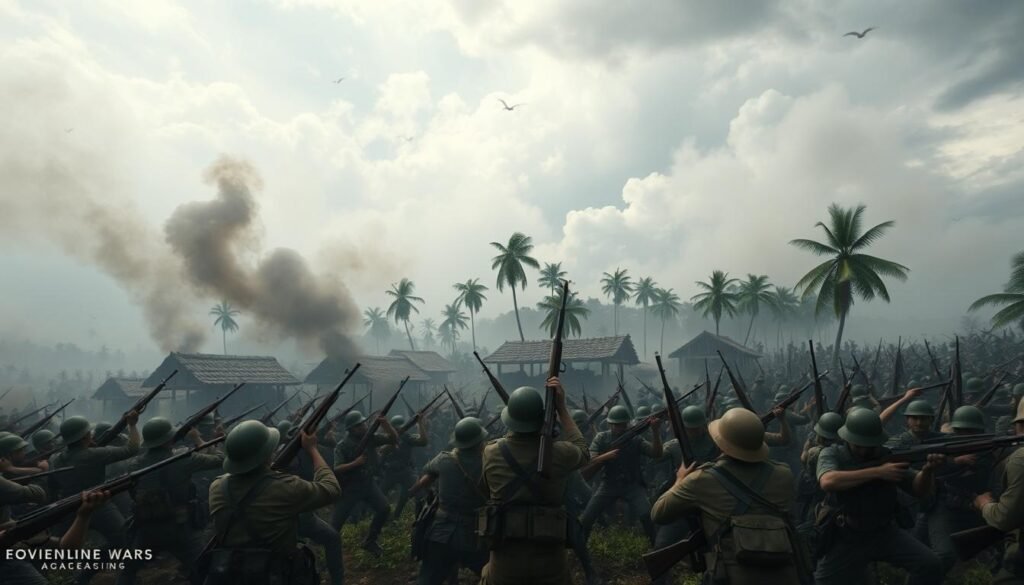
- The establishment of the Philippine Commission in 1900, which marked the beginning of American colonial governance.
- The deployment of approximately 20,000 American soldiers during the conflict, with around 4,200 fatalities reported.
- The significant reduction in military presence by 1903, with only 7,000 of the original 25,000 troops remaining in the Philippines.
The Spanish colonial legacy, the Philippine Revolution, and American intervention all played important roles in shaping the course of the Philippine-American War. Understanding these historical context is crucial to grasping the complexities of the conflict and its lasting impact on the Philippines.
The Initial Phase of Filipino Resistance
The Filipino resistance against American rule was led by Emilio Aguinaldo, who declared the Philippines’ independence from Spain in 1898. This marked the beginning of the Philippine Revolution, a period of significant turmoil and transformation in the country’s history. The Filipino people, determined to assert their independence, employed various tactics, including guerrilla warfare and diplomacy, to resist American rule.
Under Aguinaldo’s leadership, the First Philippine Republic was established in 1899, with its own government and institutions. However, the new republic faced significant challenges, including a lack of international recognition and internal divisions. Despite these obstacles, the Filipino people continued to resist American rule, driven by their desire for independence and self-determination.

The initial phase of Filipino resistance was marked by a series of battles and skirmishes between Filipino forces and American troops. The Filipino people, although outnumbered and outgunned, fought bravely, using their knowledge of the terrain and guerrilla tactics to their advantage. The Philippine Revolution, led by Emilio Aguinaldo, played a significant role in shaping the country’s history and identity.
Key events in the initial phase of Filipino resistance include:
- The declaration of independence from Spain in 1898
- The establishment of the First Philippine Republic in 1899
- The start of the Filipino-American War in 1899
These events highlight the determination and resilience of the Filipino people in their quest for independence and self-determination.
Understanding the Root Causes of Disunity in the Philippine Forces
The Philippine forces were plagued by disunity, which was fueled by regional divisions, class struggles, and ideological differences. These factors contributed to a lack of cohesion and coordination among the different groups, ultimately weakening their resistance against American colonial rule.
Regional divisions played a significant role in the disunity of the Philippine forces. The country was divided into different regions, each with its own distinct culture and language. For example, the Tagalog-speaking people of the north were often at odds with the Visayan-speaking people of the south. This regional divide led to conflicts and power struggles among the different groups, further exacerbating the disunity.
Class struggles within Filipino society also contributed to the disunity. The wealthy elite, who were often educated and influential, held significant power and control over the country’s resources. In contrast, the poorer masses were often marginalized and excluded from decision-making processes. This led to resentment and frustration among the lower classes, which further fueled the disunity.

Ideological differences among the leaders of the Philippine Revolution also played a significant role in the disunity. Some leaders, such as Emilio Aguinaldo, advocated for a more moderate approach, while others, such as Andres Bonifacio, pushed for a more radical stance. These ideological differences led to conflicts and power struggles among the leaders, further weakening the resistance.
The following table summarizes the key factors that contributed to the disunity of the Philippine forces:
| Factor | Description |
|---|---|
| Regional divisions | Divisions between different regions, each with its own distinct culture and language |
| Class struggles | Conflicts between the wealthy elite and the poorer masses |
| Ideological differences | Conflicts among leaders with different ideological stances |
In conclusion, the disunity of the Philippine forces was a complex issue, fueled by regional divisions, class struggles, and ideological differences. Understanding these root causes is essential to grasping the challenges faced by the Philippine Revolution and the ultimate defeat of the Filipino forces.
The Role of Filipino Collaborators
The Philippine Revolution was a complex and multifaceted conflict that involved various groups and individuals. One significant aspect of this conflict was the role of Filipino collaborators, who worked with the American colonial authorities to undermine the revolution. These collaborators were motivated by a desire for power or a belief that American rule was inevitable.
Some Filipino leaders collaborated with the Americans, providing intelligence or logistical support to the American military. This collaboration played a significant role in facilitating American control over the country and undermining the Philippine Revolution. The impact of these collaborators was substantial, as they helped to weaken the revolution and pave the way for American rule.
The involvement of Filipino collaborators in the Philippine-American War was a significant factor in the conflict’s outcome. Their actions, driven by a desire for power or a belief in the inevitability of American rule, contributed to the suppression of the rebellion and the establishment of American control over the Philippines. The legacy of these collaborators continues to be felt, serving as a reminder of the complex and often fraught nature of the Philippine Revolution.
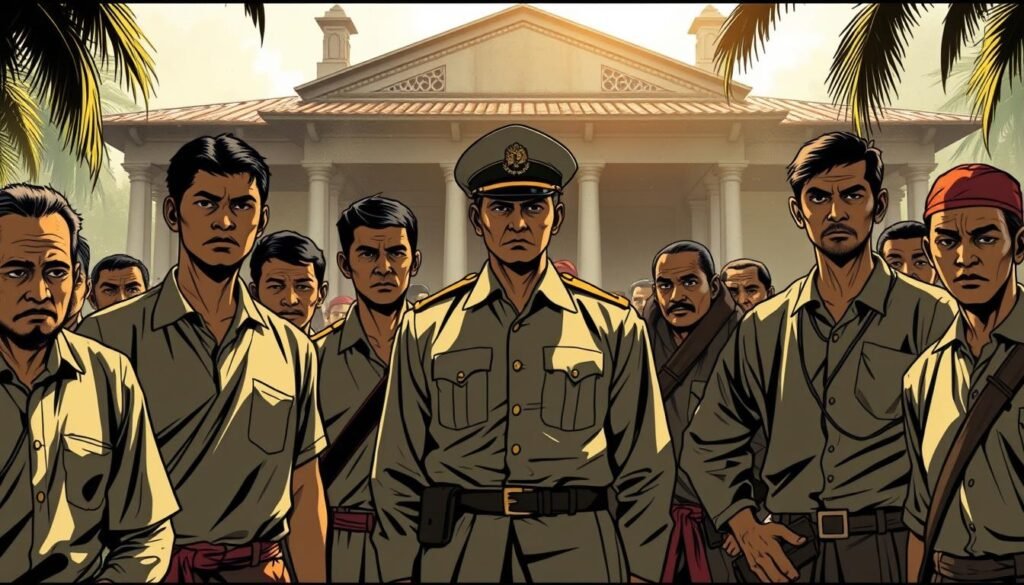
The story of Filipino collaborators during the Philippine-American War is a complex and nuanced one, reflecting the difficult choices and challenges faced by individuals and groups during this period. As the Philippines continued to navigate the challenges of American rule, the role of these collaborators would remain an important and contested aspect of the country’s history.
American Military Superiority and Technical Advantages
The American military had significant superiority over the Philippine forces in terms of modern weapons, equipment, and training. This American military superiority played a crucial role in the outcome of the war. The Americans also had a well-planned strategic planning for suppressing the rebellion, which included the use of naval dominance to blockade the islands and prevent the importation of arms and supplies.
The use of modern weapons and equipment gave the American military a significant advantage over the Philippine forces. The Americans were able to use their naval dominance to control the seas and prevent the Philippine forces from receiving supplies and reinforcements.
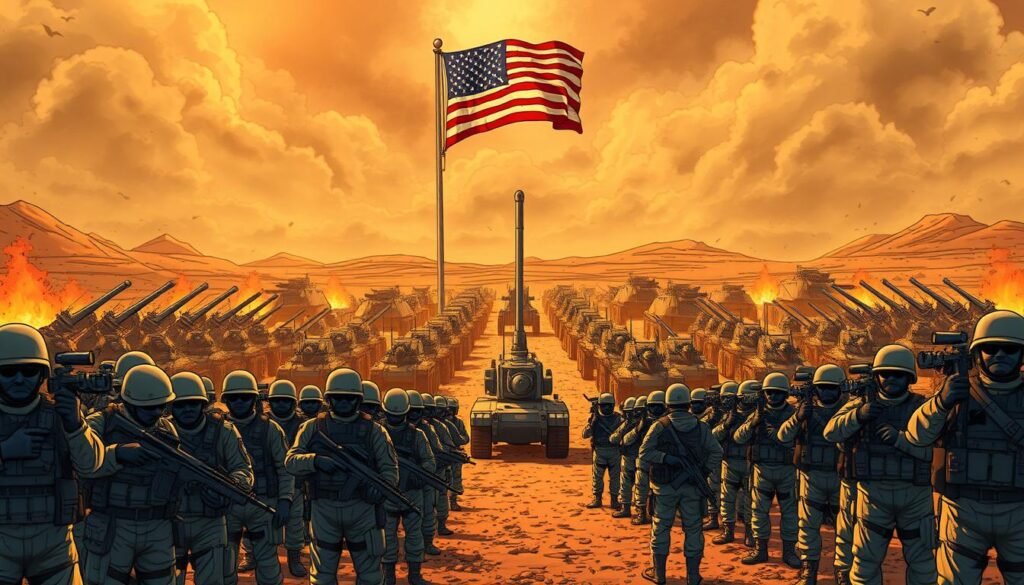
Key Factors in American Military Superiority
- Modern weapons and equipment
- Strategic planning and execution
- Naval dominance and control of the seas
The combination of these factors gave the American military a significant advantage over the Philippine forces, ultimately leading to the defeat of the Philippine rebellion.
The Impact of Social Class Disunity on Military Operations
The Philippine Revolution was marked by social class disunity, which significantly affected military operations. The wealthy elite and the poorer masses had different interests and goals, leading to conflicts and power struggles within the Philippine leadership.
This disunity weakened the rebellion and made it more vulnerable to American attack. The Philippine Revolution was a complex and multifaceted conflict, and the social class disunity was a major factor in its outcome. The different social classes had different levels of investment in the revolution, and this led to conflicting priorities and strategies.
Some of the key factors that contributed to the social class disunity include:
- Different economic interests
- Varying levels of education and social status
- Conflicting political ideologies
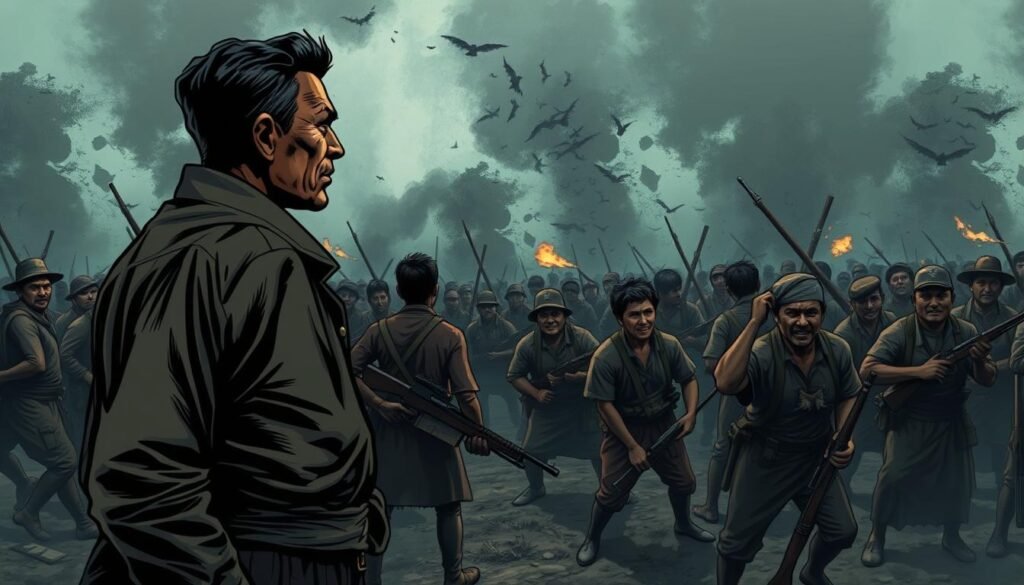
The military operations of the Philippine Revolution were also affected by the social class disunity. The wealthy elite often prioritized their own interests over the needs of the rebellion, while the poorer masses were more radical and willing to take risks. This led to a lack of cohesion and coordination among the Philippine forces, making it easier for the American military to gain the upper hand.
In conclusion, the social class disunity had a significant impact on the military operations of the Philippine Revolution. The conflicting interests and priorities of the different social classes weakened the rebellion and made it more vulnerable to American attack.
Regional Factionalism and Its Military Consequences
The Philippine forces were divided along regional lines, with different groups having different interests and goals. This regional factionalism played a significant role in the conflict, as various regions had their own agendas and priorities.
A notable example of this division is the Luzon-Visayas divide, where the Tagalog-speaking people of the north were often at odds with the Visayan-speaking people of the south. This divide led to a lack of unity and coordination among the Philippine forces, making it easier for the American military to gain control.
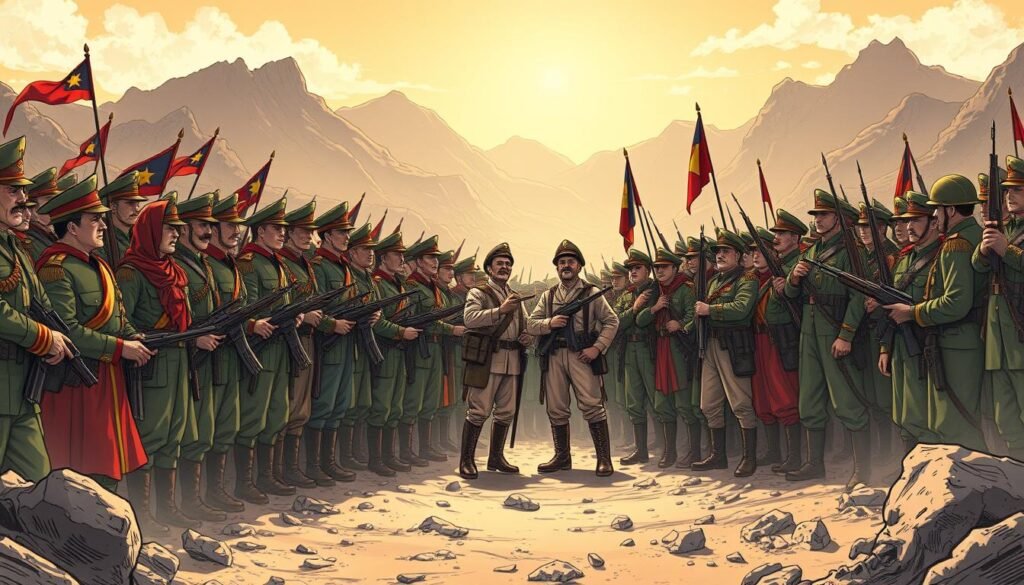
In addition to the Luzon-Visayas divide, the Muslim south also had its own separate struggle, as the Muslim population of the southern islands resisted American rule and sought to establish an independent Islamic state. This further complicated the conflict, as the Philippine forces had to contend with multiple fronts and opposing interests.
Impact on Military Operations
The regional factionalism and divisions within the Philippine forces had significant consequences for their military operations. With different regions and groups having their own agendas, it was challenging to coordinate and execute effective military strategies.
Long-term Effects
The legacy of regional factionalism and the Luzon-Visayas divide continues to shape the Philippines’ political and social landscape. Understanding the historical context of these divisions is essential for building a more unified and cohesive nation.
Leadership Conflicts Among Filipino Generals
The Philippine-American War was marked by significant leadership conflicts among Filipino generals, which weakened the rebellion and made it more vulnerable to American attack. The internal conflict among Filipino leaders was characterized by a divide between radical and conservative factions, leading to a significant schism in military strategy. General Antonio Luna was a polarizing figure during this period, and his strict adherence to military discipline resulted in disciplinary actions against officers.
The disunity among Filipino leaders ultimately contributed to the subjugation of the Philippines under American rule. Power struggles and tactical disagreements were prevalent, with different leaders having different ideas about how to fight the war. The assassination of General Luna by fellow Filipinos marked a critical juncture in the independence movement, showcasing the lethal consequences of internal discord.
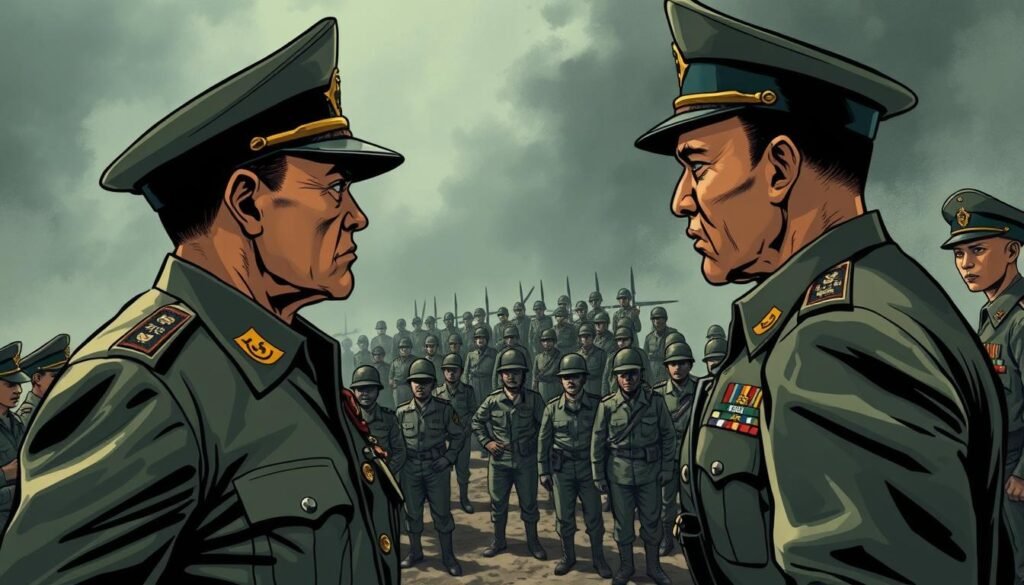
The leadership conflicts and power struggles among Filipino generals were further exacerbated by tactical disagreements. The Kawit Brigade’s reluctance to follow Luna’s orders exemplified the disunity within the Filipino army, contributing to weakened military strategies. The lack of unity among Filipino leaders suggests a precarious political environment, with potential implications for governance and stability.
The Role of Political Disunity in Strategic Decision-Making
The Philippine Revolution was marked by political disunity among its leaders, which significantly impacted strategic decision-making. Different groups had varying interests and goals, leading to conflicts and power struggles that weakened the rebellion. The wealthy elite often prioritized their own interests over the needs of the rebellion, while the poorer masses were more radical and willing to take risks.
This political disunity was a major factor in the outcome of the Philippine-American War. The lack of a unified front made it difficult for the Filipino forces to develop effective strategic decision-making strategies, allowing the American forces to gain the upper hand. The Philippine Revolution was ultimately unsuccessful due to the inability of its leaders to put aside their differences and work towards a common goal.
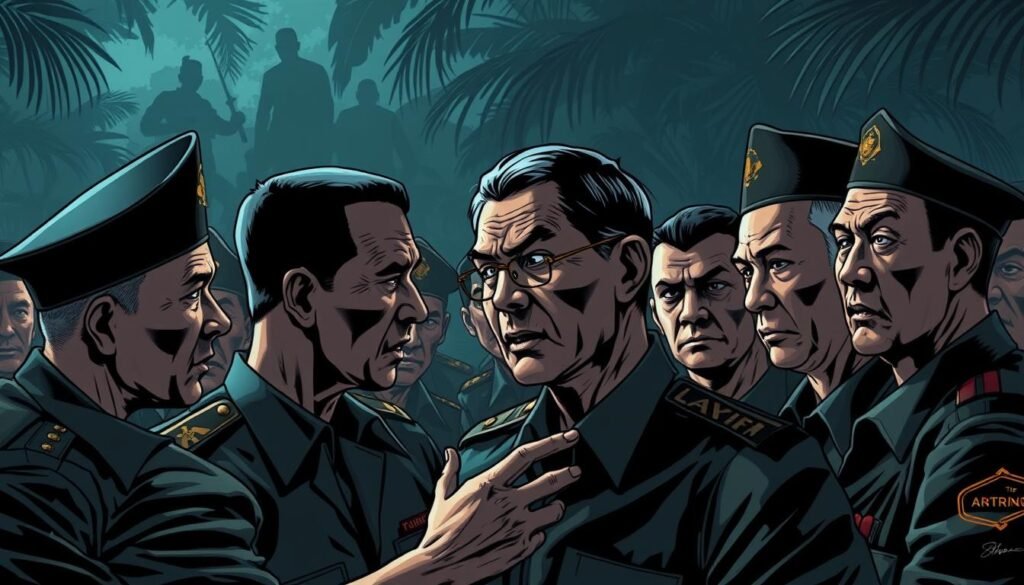
- Weakened rebellion: The lack of a unified front made it difficult for the Filipino forces to launch effective attacks against the American forces.
- Power struggles: The conflicts and power struggles among the leaders of the Philippine Revolution distracted from the main goal of the rebellion and led to further disunity.
- Ineffective strategic decision-making: The inability of the leaders to work together and make decisions based on the needs of the rebellion rather than their own interests led to poor decision-making and ultimately, the failure of the rebellion.
In conclusion, the political disunity among the leaders of the Philippine Revolution played a significant role in the outcome of the Philippine-American War. The lack of a unified front and effective strategic decision-making ultimately led to the failure of the rebellion and the establishment of American rule in the Philippines.
American Psychological Warfare and Filipino Response
The Americans employed psychological warfare and propaganda campaigns to undermine the Philippine Revolution and facilitate American control over the country. This strategy involved exploiting the regional and ethnic divisions within the Philippine forces to weaken the rebellion, a classic example of divide-and-conquer tactics.
Some notable examples of American psychological operations include the production of leaflets coded numerically, such as 350 and 2400, as well as those coded with the letter “J,” like 10-J Greenwood and 15-J-3. The Far Eastern Liaison Office (FELO) also produced over 58 million leaflets in six different languages and numerous native dialects prior to 1944, demonstrating the scale of the psychological warfare effort.
The Psychological Warfare Bureau (PWB) prepared several booklets for use in the Philippines, including the Philippine Omnibook, Psychology of the Japanese Soldier, and Philippine Commentary. These materials were designed to influence the thoughts and actions of the Filipino population, as well as the Japanese military, through subtle and overt propaganda campaigns. The use of divide-and-conquer tactics was also evident in the way the Americans exploited the regional and ethnic divisions within the Philippine forces, further weakening the rebellion.
The effectiveness of these psychological warfare efforts can be seen in the way they contributed to the eventual defeat of the Philippine Revolution. By undermining the morale and unity of the Filipino forces, the Americans were able to gain a strategic advantage, ultimately leading to the surrender of the Philippine Republic.
The Economic Impact of Prolonged Warfare
The prolonged warfare had a significant economic impact on the Philippines, leading to resource depletion and supply chain disruptions. Many farmers were forced to flee their homes or were killed in the conflict, resulting in a decline in agricultural production.
The war also led to a shortage of food and other essential supplies, which had a devastating impact on the civilian population. The economic impact of the war was further exacerbated by the destruction of infrastructure, including roads, bridges, and buildings.
Some of the key effects of the war on the economy include:
- Decline in agricultural production
- Shortage of food and essential supplies
- Destruction of infrastructure
- Resource depletion and supply chain disruptions
The economic impact of the war was severe and long-lasting, with many Filipinos struggling to recover from the devastating effects of the conflict. The resource depletion and supply chain disruptions caused by the war had a lasting impact on the country’s economy and infrastructure.
Cultural and Religious Factors Contributing to Disunity
The Philippine-American War was not only a conflict between two nations but also a complex web of internal struggles within the Philippine forces. Cultural factors and religious factors played a significant role in contributing to disunity among the Filipino people. The Muslim population of the southern islands, for example, had a distinct culture and religion that set them apart from the rest of the country.
According to research, religious conflicts can lead to a lack of understanding and potential conflicts. The principle of respect for persons is fundamental in Catholic teaching, highlighting that all people are created in the image and likeness of God. However, closed-mindedness about religious beliefs is prevalent among Catholics and Fundamentalist Christians, leading to mutual animosity and suspicion.
Some key factors contributing to disunity include:
- Diverse backgrounds and experiences
- Lack of understanding and respect for different religious beliefs
- Power struggles and conflicts within the Philippine leadership
In conclusion, the cultural and religious factors that contributed to disunity within the Philippine forces during the Philippine-American War were complex and multifaceted. Understanding these factors is essential to appreciating the challenges faced by the Filipino people during this period.
The Final Phase of the War and Surrender
The final phase of the war was marked by a series of key battles and defeats for the Philippine forces, which ultimately led to the surrender of Emilio Aguinaldo and the end of the rebellion. During this period, the Americans and Filipinos engaged in peace negotiations, which resulted in the establishment of American colonial rule over the Philippines.
The final phase of the war saw significant events that shaped the outcome of the conflict. Some of the notable events include:
- Battle of Tirad Pass: a significant defeat for the Philippine forces, which led to the capture of Aguinaldo and the destruction of the Philippine army.
- Peace negotiations: the Americans and Filipinos engaged in talks, which resulted in the establishment of American colonial rule over the Philippines.
The peace negotiations were a crucial aspect of the final phase of the war, as they marked the beginning of a new era in Philippine-American relations. The negotiations were led by American and Filipino representatives, who worked together to establish the terms of the surrender and the subsequent colonial rule.
Conclusion
The Philippine-American War was a complex and multifaceted conflict that was influenced by a variety of factors, including disunity, regional factionalism, and American military superiority. This war had a profound impact on the Philippines, leading to the establishment of American colonial rule and the suppression of the Philippine Revolution. The significance of unity and reconciliation can be seen in the context of the Community of Grandchamp in Switzerland, which exemplifies a model of unity and reconciliation through its commitment to hospitality and ecumenical engagement among diverse sisters from various Christian traditions.
Disunity is a significant threat to any community, as seen in the Philippine-American War, where regional factionalism and leadership conflicts hindered the Filipino forces’ ability to resist American colonization. The importance of unity is also emphasized in the New Testament, where contentiousness and strife between brethren are considered major sins. The dissolution of unity can lead to significant harm, as seen in the tangible impact of disunity on church membership and the risk of alienation due to conflict.
In conclusion, the Philippine-American War serves as a reminder of the importance of unity and reconciliation in achieving a common goal. The war’s legacy continues to shape the Philippines’ history and identity, and its lessons can be applied to contemporary issues, such as the importance of unity in the face of national controversies and social media-fueled divisions. By understanding the factors that contributed to the war’s outcome, we can work towards building stronger, more united communities that can effectively address the challenges of the 21st century.
FAQ
What were the main factors that contributed to the Philippines’ defeat in the Philippine-American War?
The main factors that contributed to the Philippines’ defeat in the Philippine-American War included disunity among the Filipino forces, regional and ethnic divisions, class struggles, ideological differences, and American military superiority and technical advantages.
What was the Spanish colonial legacy in the Philippines?
The Spanish colonial legacy in the Philippines had a profound impact on the country’s language, culture, and politics, shaping the nation’s identity and influencing its struggle for independence.
What was the role of Emilio Aguinaldo in the Philippine-American War?
Emilio Aguinaldo was a key leader of the Philippine Revolution against Spain and later against the United States, serving as the president of the First Philippine Republic and playing a significant role in the country’s struggle for independence.
How did regional and ethnic divisions affect the Philippine forces during the war?
Regional and ethnic divisions among the Philippine forces, such as the Luzon-Visayas divide and the Muslim south’s separate struggle, weakened the rebellion and made it more vulnerable to American attack.
What was the impact of social class disunity on military operations during the war?
Social class disunity within the Philippine forces had a significant impact on military operations, as different groups had different interests and goals, leading to conflicts and power struggles that weakened the rebellion.
How did American military superiority and technical advantages contribute to the Philippine defeat?
American military superiority and technical advantages, including modern weapons and equipment, strategic military planning, and naval dominance, gave the United States a significant edge over the Philippine forces, ultimately contributing to the country’s defeat.
What was the role of Filipino collaborators in the Philippine-American War?
Filipino collaborators played a significant role in undermining the Philippine Revolution and facilitating American control over the country, with some leaders working with the Americans to suppress the rebellion and others providing intelligence or logistical support to the American military.
How did American psychological warfare and propaganda campaigns affect the Philippine forces?
American psychological warfare and propaganda campaigns, including divide-and-conquer tactics and portrayals of the Filipino rebels as barbaric and uncivilized, undermined the Philippine Revolution and facilitated American control over the country.
What were the economic consequences of the prolonged warfare during the Philippine-American War?
The prolonged warfare had a significant economic impact on the Philippines, leading to resource depletion, supply chain disruptions, and a decline in agricultural production, which had a devastating impact on the civilian population.
How did cultural and religious factors contribute to disunity within the Philippine forces?
Cultural and religious factors, including the Muslim south’s distinct culture and religion, contributed to disunity within the Philippine forces, leading to conflicts and power struggles that weakened the rebellion.
What were the key battles and defeats that led to the surrender of Emilio Aguinaldo and the end of the rebellion?
The key battles and defeats that led to the surrender of Emilio Aguinaldo and the end of the rebellion included the Battle of Tirad Pass in 1899, which led to the capture of Aguinaldo and the destruction of the Philippine army.
What were the terms of the peace negotiations that ended the Philippine-American War?
The peace negotiations that ended the Philippine-American War resulted in the establishment of American colonial rule over the Philippines, with the United States gaining control over the country’s government, economy, and military.
Source Links
- Part 1
- Film Review: ‘Heneral Luna’
- Colonial Inheritances: Religious Dialogues in the Philippine-American War
- Collapse of the Filipino Armed Resistance to American Occupation, 1899 – 1905: Perspectives from Capiz – International Journal of Research and Innovation in Social Science
- Disinformation promotes disunity
- History of the Philippines
- The Tejeros Convention: Persistent Political Disunity
- World War III / What it was like during the Japanese Occupation
- Social media as tool for national disunity
- The Gulf Military Balance and U.S. Commitments to the Gulf
- Disunity of Command | Air & Space Forces Magazine
- Union Success in the Civil War and Lessons for Strategic Leaders
- You Catch More Flies With Honey: Reevaluating the Erroneous Premises of the Military Exception to Title VII
- Putting Factions ‘Back in’ the Civil-Military Relations EquationGen…
- The Powerful Factions Among China’s Rulers
- The Tragic Demise of General Antonio Luna: Betrayal and Bloodshed
- ‘Destabilization’ and Disunity in the Philippine Government
- POLITICAL FACTORS IN THE FORMULATION OF STRATEGY
- Expectation Violation in Political Decision Making: A Psychological Case Study
- US Army Psychological Warfare Branch Leaflets for the Pacific World War II
- Europe’s dark future: How might a protracted conflict between Russia and Ukraine affect Europe?
- Project MUSE – War in Ukraine
- The Unity in Disunity | Carnegie Reporter Winter 2019 | Carnegie Corporation of New York
- A Reflection on Unity and Disunity
- What causes disunity? | Psephizo
- Sudden Surrender and Botched Liberation (Chapter 3) – The Collapse of Nationalist China
- The Framework of the Trial (Chapter 1) – The Tokyo War Crimes Tribunal
- The Dangers of Disunity
- Avoiding Disunity amid Difficult (Coronavirus) Decisions

